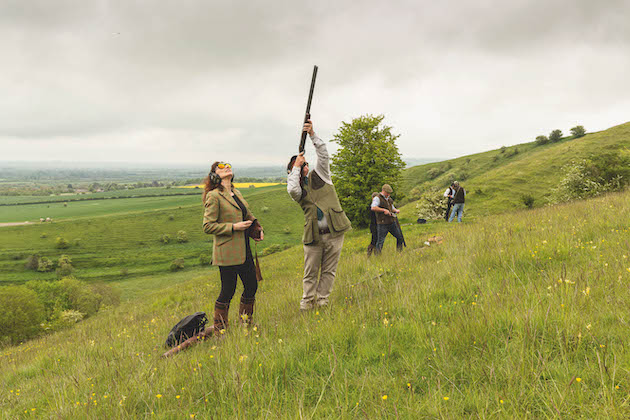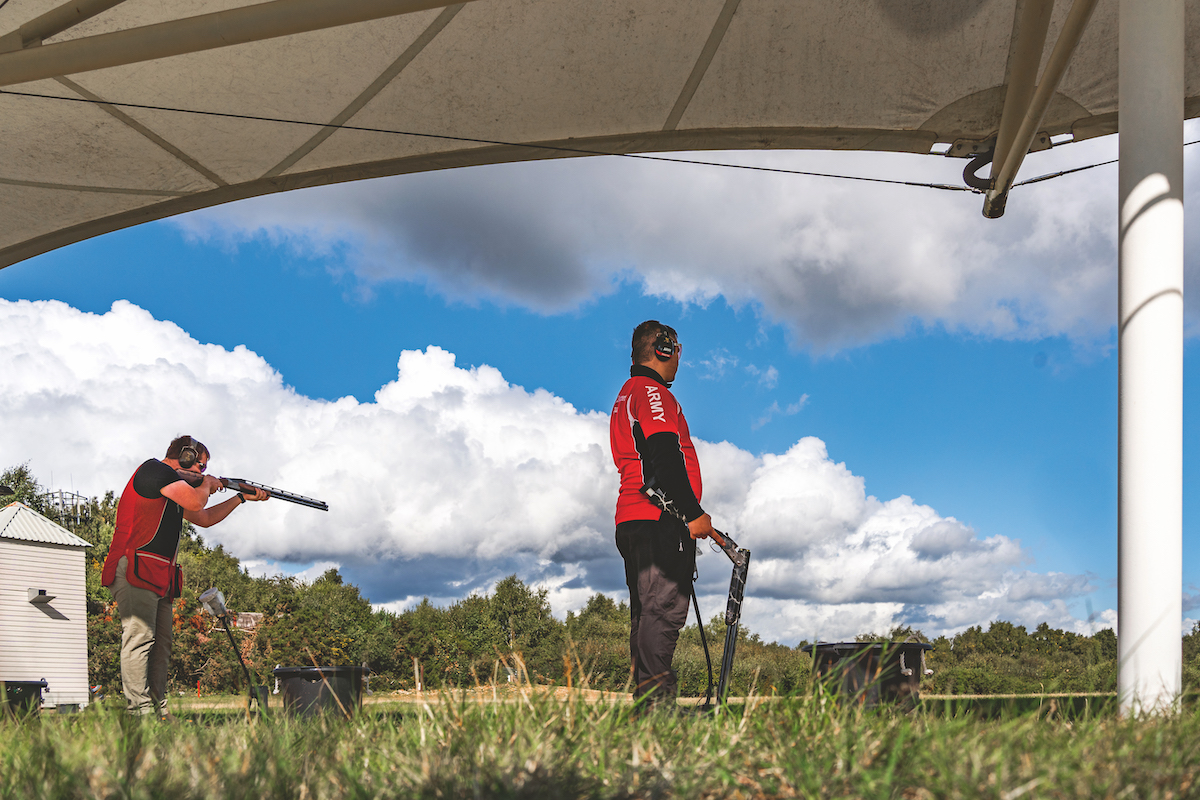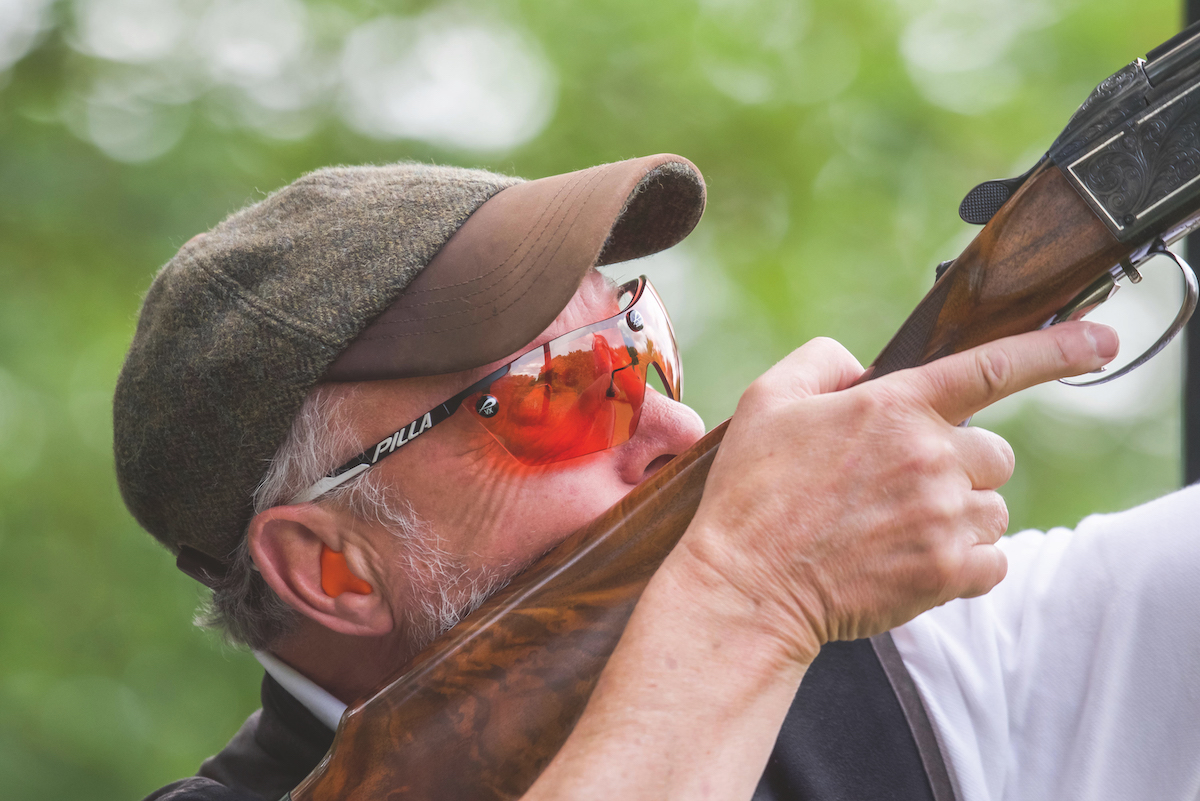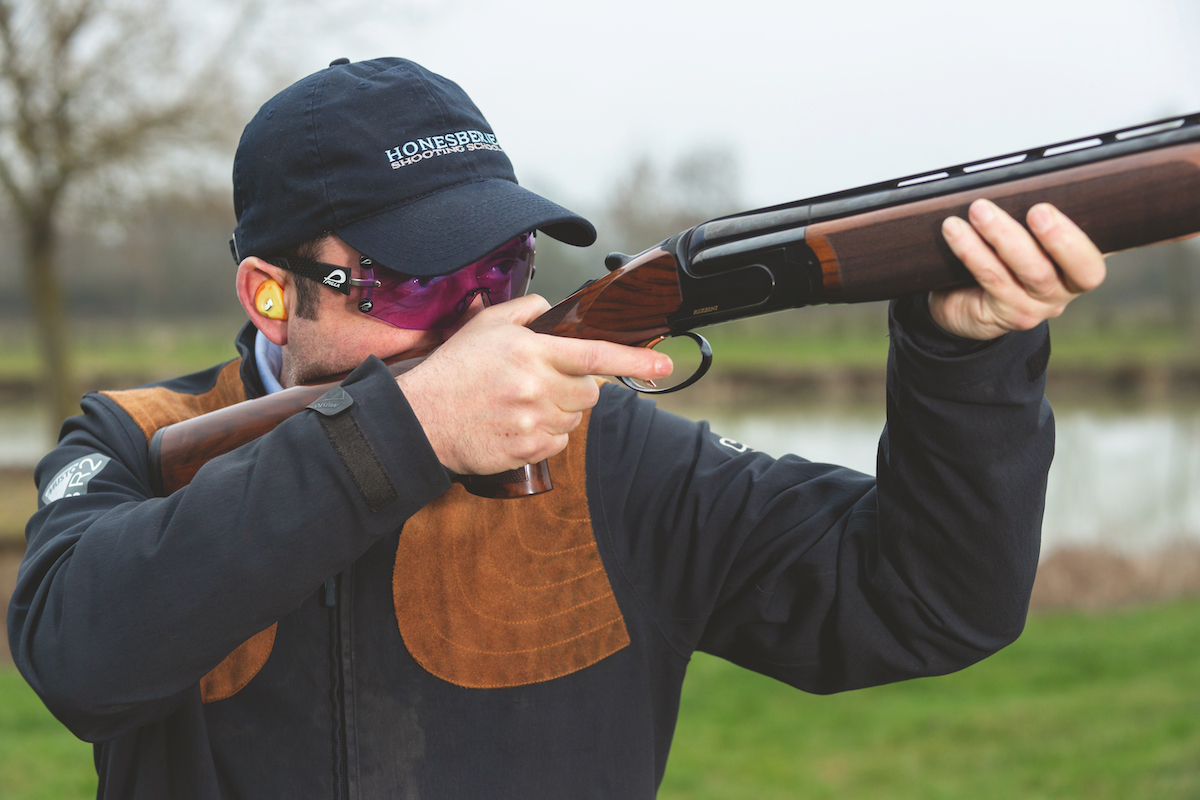Get better at game on clays
Simon Reinhold wonders if those black discs are anything like the real feathered thing

Simulated game days are an ideal halfway house between the clay ground and a return to driven shoot
It’s that time of year when an invitation to shoot rolls into the inbox and stings the average game Shot into confronting the fact they haven’t picked up a gun in something approaching a year. In the age of COVID-19, that might even be two years for some of us, but can a disappointing session missing pitch discs do more harm than good?
Many Guns begin their seasonal migration to their local clay ground as the pink-footed geese begin to split the sky overhead in the early autumn sunshine. The clay ground for some is a place of trepidation as many game Shots are nervous of their lack of match fitness showing for all to see.
They are prepared to grapple with it, though, because the imagined — and it is imagined — scorn of complete strangers pales into insignificance when compared to the ridicule from their friends after the first few drives on the big day. So with a cartridge bag over their shoulder and pre-prepared excuses on their lips, they make their furtive, solo approach to the tower, the home of the driven pair.
That’s if their clay ground has a driven pair to shoot at. In an increasingly safety-conscious world, driven clays are becoming less and less common on many clay grounds.
Instead they are replaced by a variety of crossers: long loopers, battues and chondels, many of which require sight pictures that are unfamiliar to those who do not shoot the Sportrap regularly. Baffled by the gulf between the reality of modern Sporting clays and what they can expect to find on the peg, the humbled game Shot retreats back to the car park muttering: “I never could shoot clays, anyway.”
Is such a bad practice session, played out weekly all over the country, worse than no practice at all? Are modern Sporting clay grounds really the best place to hone your skills? An important point to appreciate is that many experienced Shots do not shoot clays and game the same way — and they all miss some birds, like everybody else.
At its most basic, there are three methods to shoot a moving target with a shotgun. Pull away, swing through and maintained lead. Chris Baker, from Suffolk, is an AA class clay Shot who has won the British Side by Side Championships five times and the European Championship four times.

The clay ground can be a place of trepidation for a game Shot looking to prepare for the season ahead
Adjustments
Chris’s haul of wins demonstrates that this is not a question of over-and-under versus side-by-side — interestingly, many exceptional over-and-under Shots can’t shoot side-by-sides — and not necessarily a question of mastering any one method. He is one of the best around at shooting both and even he has to remind himself that there is an adjustment to be made after a long summer shooting competitive clays.
“It took me a long time to get a handle on the fact that, when I transition into the game season and I have a bad drive early season, I am almost always in front of the bird,” he says. “I don’t use swing through on game, I lock on to the head and I match the speed of the gun to the bird. It is a fast gun swing, but the bead doesn’t appear to leave the head of the bird. I’m killing it with gun speed, not lead.
“Only when we start shooting higher birds do I lock on to the front then open up a gap, but it’s really no more than 3ft or 5ft. Whereas I could go to Grimsthorpe Shooting Ground and shoot a battue and I might see 15ft of lead.”
This points to two conundrums from the different codes. First, everybody sees lead differently. Secondly, and perhaps counter-intuitively, the clay target that is almost always slowing down once it leaves the trap needs more perceived lead for many experienced Shots than the gamebird that is maintaining its flight speed and often increasing it.
Lead is personal. Very personal. We all want to be tested by sporting birds and, when we reach the limit of our ability and our success rate falls away, forward allowance or lead is one of the most discussed topics between stands and drives.
For most people, it may be a mistake to begin to think about opening up gaps and giving birds the proverbial ‘five-bar gate’. While high-level clay Shots may have the experience to be able to focus on the clay as well as its relationship with the muzzle of the gun, for many game Shots anything other than a peripheral awareness of the relative position of the barrel can lead their focus away from the head of the bird and on to the muzzles. This invariably results in stopping the gun — a ‘poke’ — and a miss behind.

Broken clay
Specialist help
Matt Smith, a respected game shooting instructor and sporting agent at the Royal Berkshire Shooting School (RBSS), confirms that the gulf is getting wider between the average clay ground and a specialist game shooting ground designed to prepare you for the peg. At RBSS, all visitors are accompanied by an instructor. This one-to-one guidance allows them, as long as the client is experienced, to dispense safely with the traditional cage in which you stand and vary the speed, line and angle of the clay when preparing a client for their next day in the field.
“After a while shooting very rangey chondels and loopers at many Sporting grounds, you can become very focused on seeing the gap and not the bird itself,” he says. “This is partly because the bird you’re shooting at is relatively consistent in its presentation. Every bird that comes out of a piece of cover is going to be different, so we must rely on instinct.”
There are two ways to shoot longer-range gamebirds, he points out. You can shoot with a quick gun and no gap or, as some specialist high-bird Shots prefer, a slower gun, but a bigger perceived gap. But for most normal-range game shooting, there is no time to consciously plan as you might with longer clays or very high pheasants. The demands are very different.
The rise in popularity of simulated game days is bridging the divide between Sporting grounds and off-season practice for game Shots looking to improve. However, care must be taken to ensure bad habits, which will not help you in the field, are not ingrained into your technique.
A poor gun mount can quickly result in injury on a sim game day. We must not overlook the fact that new clay Shots are often taught shooting the gun pre-mounted ‘gun up’. They may be better off refining the ‘gun down’ mount, a vital part of their technique, in the privacy of their home first.

It is crucial that game Shots guard against taking bad habits from the clay ground out into the field
Seeking consistency
Mounting your gun looking into a mirror is the first step and is good practice at no cost. If circumstances are private enough, standing in your garden with an empty gun (or snap caps) and tracking the flight path of pigeons as they fly over can be extremely beneficial, again at no cost.
For me, clay shooting is primarily an exercise in controlled levels of focus. We are looking to repeat a series of actions on four or five pairs of targets and we need consistency so that we can either adjust from a miss or repeat a successful shot.
When I’m shooting game I am looking for fluidity that can open the door to a flow experience that allows natural timing and adjustment to be made at a subconscious level.

Mounting the gun while looking into the mirror is an excellent – and free – form of practice
We must correctly assess whether a shot is safe, but also a bird’s speed, line (whether it is ours or better for our neighbour), angle of flight, as well as its species and sex — important later in the season. You only have a few seconds to make the correct call.
Many game Shots rely purely on gun speed to kill the majority of game, allowing their internal supercomputer to do the near-impossible calculation for them. Depending on how you shoot, with confidence comes timing, but above all the gun must keep moving and the shot must be finished with the natural fluidity inherent in many sporting performances that require hand eye coordination. ‘








